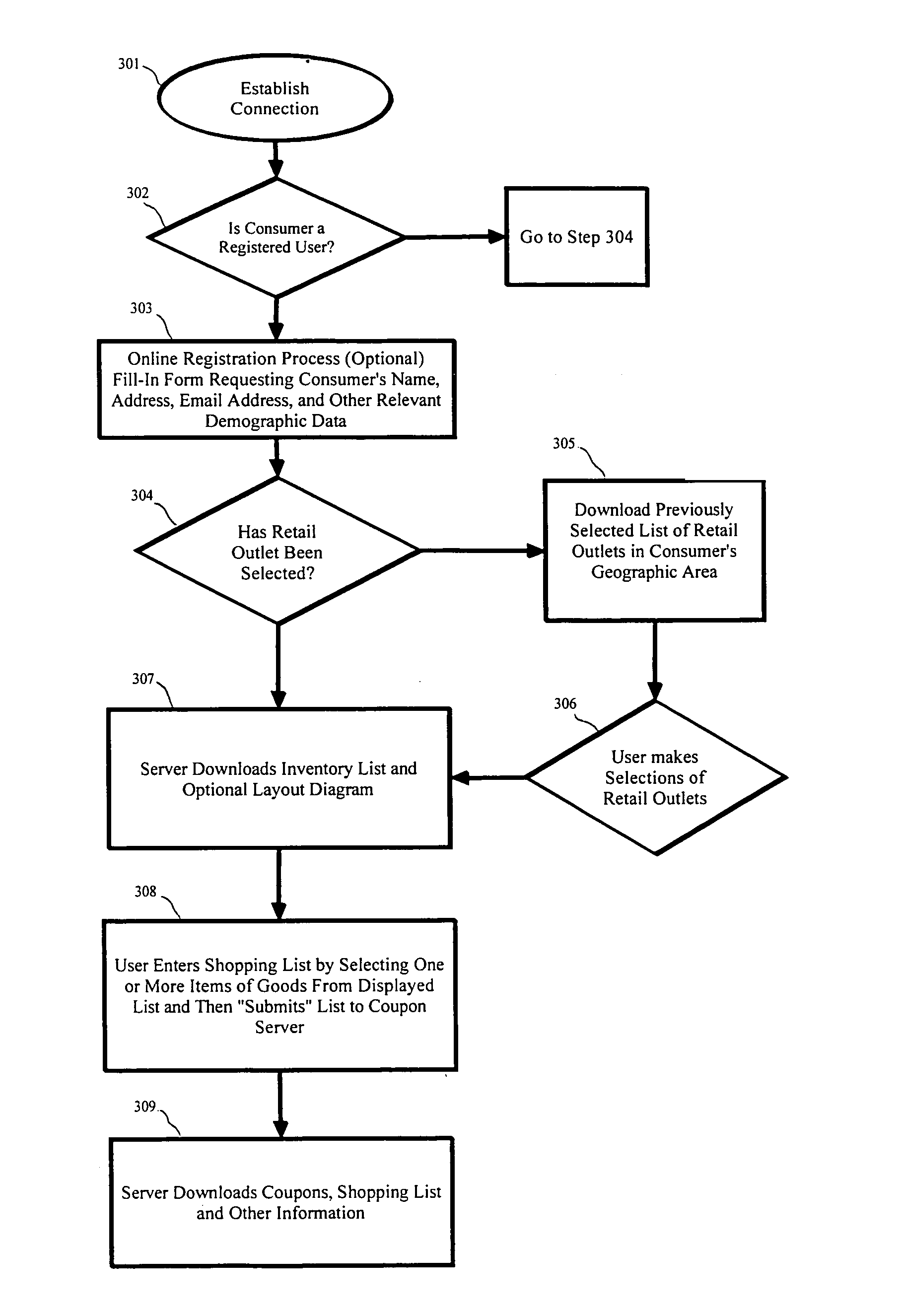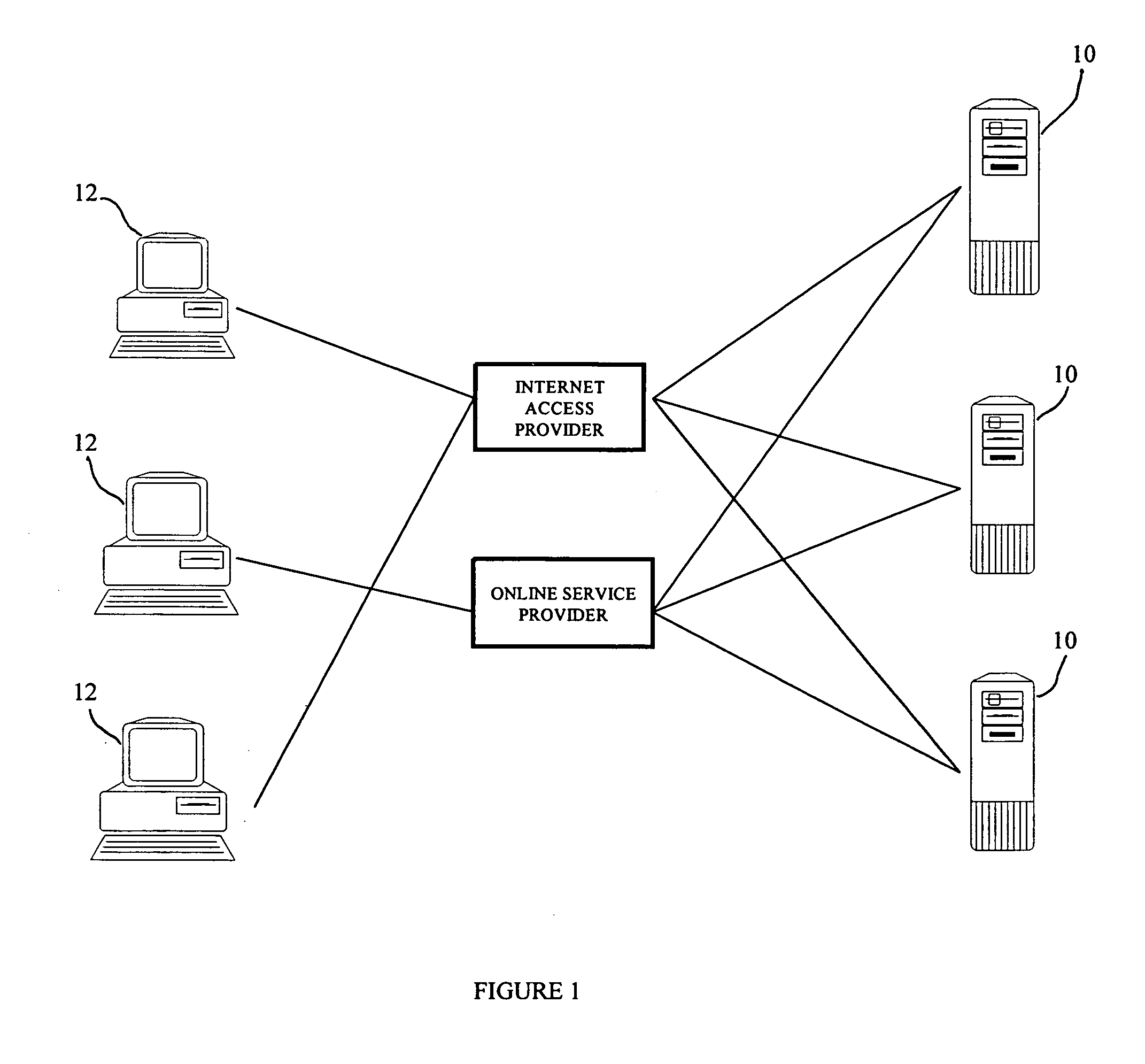While this method of promotion has proven to be effective, it has caused problems for manufacturers, consumers and merchants due to its massive inefficiency.
This is likely due to the inconvenience associated with printed coupons.
This conventional method of coupon distribution has a
disadvantage in that many consumers simply lack the time or initiative to search for and clip coupons.
Thus, printed coupons issued by manufacturers and retailers generally reach only a small segment of the consuming public, i.e., those who clip coupons based upon personal interest or financial necessity.
Although manufacturers may wish to reach a larger percentage of consumers having the greatest spending power, many such consumers do not clip coupons due to the inordinate amount of time required to do so.
However, coupon books are generally subject-oriented and are impracticable for use in connection with a large variety of goods, such as groceries.
However, this method does not overcome the foregoing drawbacks, and fails to inform the consumer of which coupons are available before making a
purchasing decision.
While this form of purchase incentive may serve to promote the participating retailers, it does not serve as a purchase incentive for specific goods.
Thus conventional attempts at overcoming the inconvenience associated with coupon distribution are either ineffective or require the consumer to dedicate an unreasonable amount of investigative time prior to making a purchase in order to locate discounted items.
Still another problem with printed coupons is the massive a fraud on the part of consumers, and, to an even greater extent, on the part of merchants.
As a result, many unscrupulous merchants seek reimbursement for counterfeit coupons or authentic coupons which have not, in fact, been redeemed by consumers.
There is no convenient way to prevent such fraud with the use of printed coupons.
However, the vast majority of retailers lack the resources or the coupon redemption volume to justify the acquisition of such equipment.
However, conventional Web-based advertising tools do not provide for adequate targeting of promotional materials and are not particularly well suited for the distribution of discount coupons.
In many cases, the use of an ad banner substantially increases the advertiser's
exposure to consumers.
While Web sites and ad banners are important for the establishment of an online presence, they are not suitable for the targeted distribution of promotional materials, such as discount coupons.
In addition, conventional Web-based advertising methods do not target the distribution of promotional materials to consumers interested in
purchasing specific products.
These methods of coupon distribution suffer from the same drawbacks of printed coupons in that they require consumers to search through lists of many irrelevant coupons to locate a few pertinent coupons.
This system, however, is available for use only with national grocery chains and fails to provide consumers with the ability to obtain discounts for a current transaction.
In addition to the inability to distribute promotional information, such as discount coupons, on a sufficiently targeted basis, current Web-based monitoring techniques make it difficult for individual companies to obtain meaningful data concerning the demand for their products.
Although
Web site administrators can monitor consumer use and interaction with their own Web sites and ad banners, no current means provides for the accurate monitoring of consumer purchasing habits on a widespread basis independent of computer use or
Internet access.
The monitoring of
Web site and ad banner access does not necessarily equate with consumer purchasing habits, and while the value and effectiveness of such resources can be accurately monitored by known monitoring techniques, such techniques do not provide for the adequate targeting of purchase incentives.
As a result, much of the promotional information provided by a server over a
public network is untargeted.
To the extent that promotional information is served on a targeted basis, such targeting is not necessarily beneficial since it is not done in response to user requests nor based on actual purchasing decisions.
Due to the inconvenience of conventional coupon distribution methods and the limited monitoring abilities of conventional coupon distribution systems, it has been difficult to build customer loyalty or to attract new customers through the use of targeted purchase incentives such as discount coupons.
Due largely to the inability of current discount coupon distribution services to adequately target discount coupons and promotional materials to interested consumers, use of
the Internet for the
dissemination of promotional material has essentially resulted in an increased amount of unsolicited junk mail.
In other words, the same or similar packages of mostly useless discount coupons and promotional literature received by consumers by mail are being served to the same consumers via
Internet resources, such as email facilities, with the same inefficiency.
Current online coupon distribution services are not capable of adequately targeting coupon offers and merely serve the same information to all users.
Since HTTP or Web servers cannot automatically determine the purchasing habits of individual consumers,
Web site administrators and advertisers cannot accurately determine the effectiveness of their resources.
Thus, targeted service of promotional information and purchase incentives is difficult.
 Login to View More
Login to View More  Login to View More
Login to View More 


